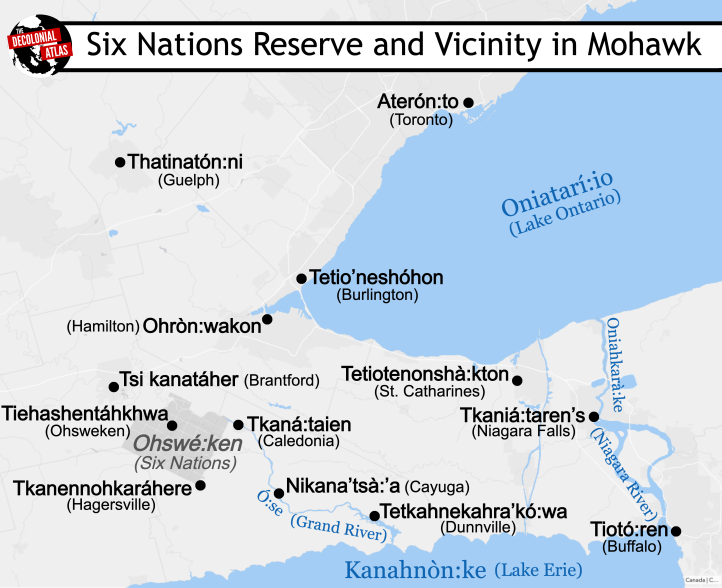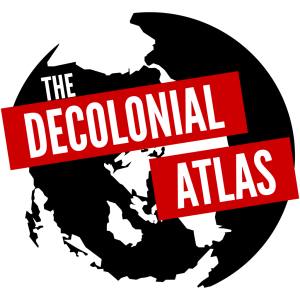
The Six Nations of the Haudenosaunee Confederacy are the Kanien’kehá:ka (Mohawk), Oneniote’á:ka (Oneida), Ononta’kehá:ka (Onondaga), Kahoniokwenhá:ka (Cayuga), Tsonontowane’á:ka (Seneca), and Thatihskarò:roks (Tuscarora). After the American Revolution, the Haudenosaunee were driven from their homelands in what’s now referred to as New York by the newly-formed United States. Across the border (tsi tekaristì:seron – “where the tracks are dragged” in Mohawk), the Six Nations were deeded a tract of land along the Grand River by the British.
Currently, the reserve spans over 190 km². This represents approximately 5% of the original 3,800 km² of land granted to the Six Nations by the 1784 Haldimand Treaty. Today, Six Nations is the largest First Nations reserve in Canada by population, and the second largest reserve by size. It’s the only reserve or reservation in Turtle Island shared by all six Haudenosaunee nations.

As always, Decolonial Atlas maps can be reused under the Decolonial Media License 0.1.

I saw a seminar yesterday, at the beginning of which the moderator said https://www.youtube.com/watch?v=lOmgl91CmOA – well, you can listen to the first few seconds of the Indigenous land acknowledgement. Totally sad.
Kitchener/Waterloo is a massive city on the Grand River. He doesn’t happen to mention that those Indigenous still own the Haldimand Tract, a huge amount of land worth quadrillions of dollars, agreed to and then stolen as usual. Nobody could stop white people from ‘just coming in’.
Best,
Dave
LikeLike
Amusing.
In so many places we are cheating aboriginal peoples of Canada who have clear, recognized aboriginal title to lands they held at the time of contact. I’m not sure why the Crown recognized it in such an unlimited fashion- it was a moral and generous policy by the standards of empire-building and colonial settlement throughout history, but it should have been recognized as storing up trouble by doing that and then parcelling out land grants, laying out surveys, and issuing patents for it to settlers. They’d have been better off not.
Here we are even cheating an aboriginal people of land that was not theirs by aboriginal title or pre-contact habitation, but solely by royal grant. Can’t win.
Whose land was that, anyway, back before the beaver wars? Erie? Neutral? Huron, even, thought maybe just at the north end?
LikeLike